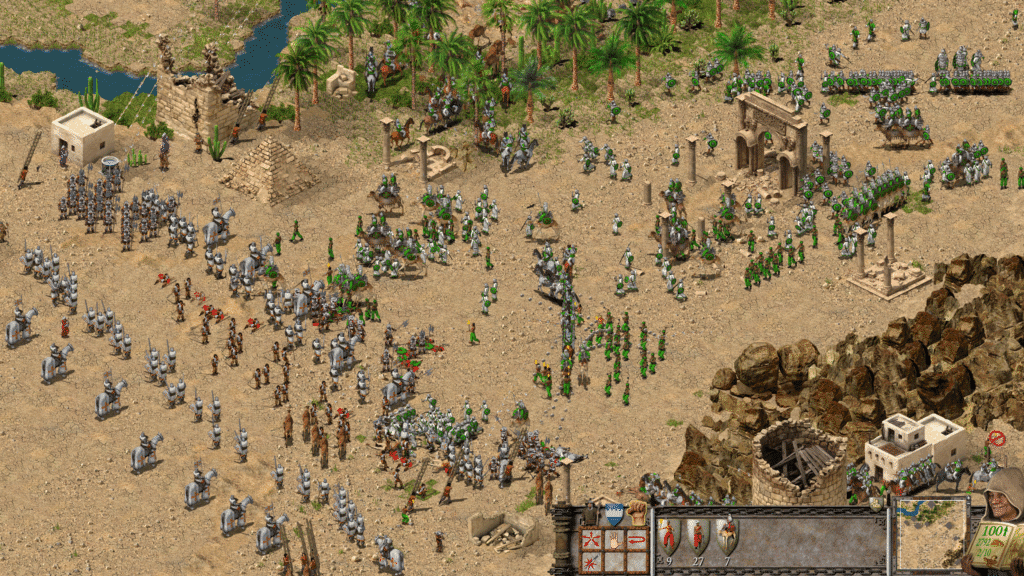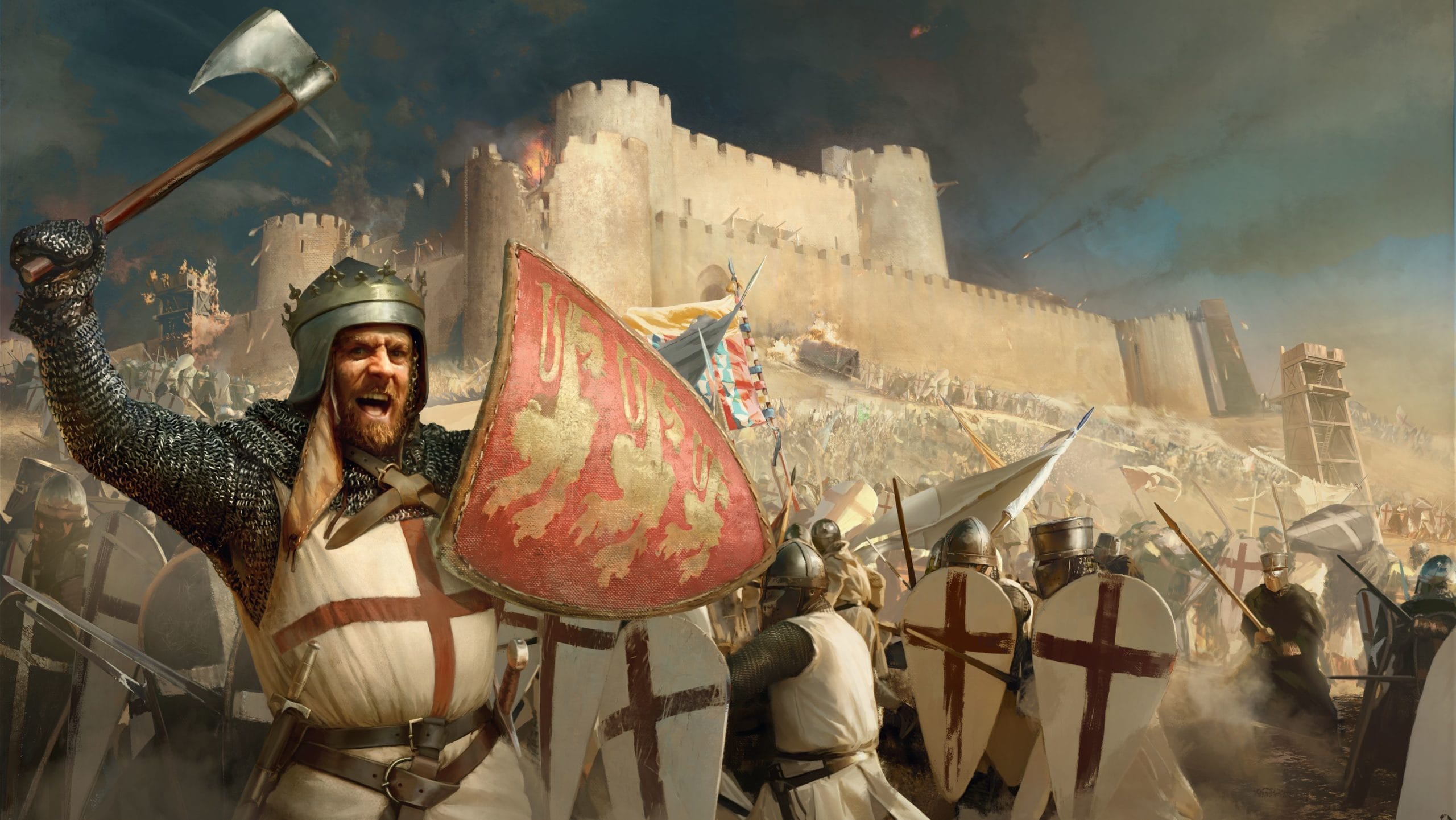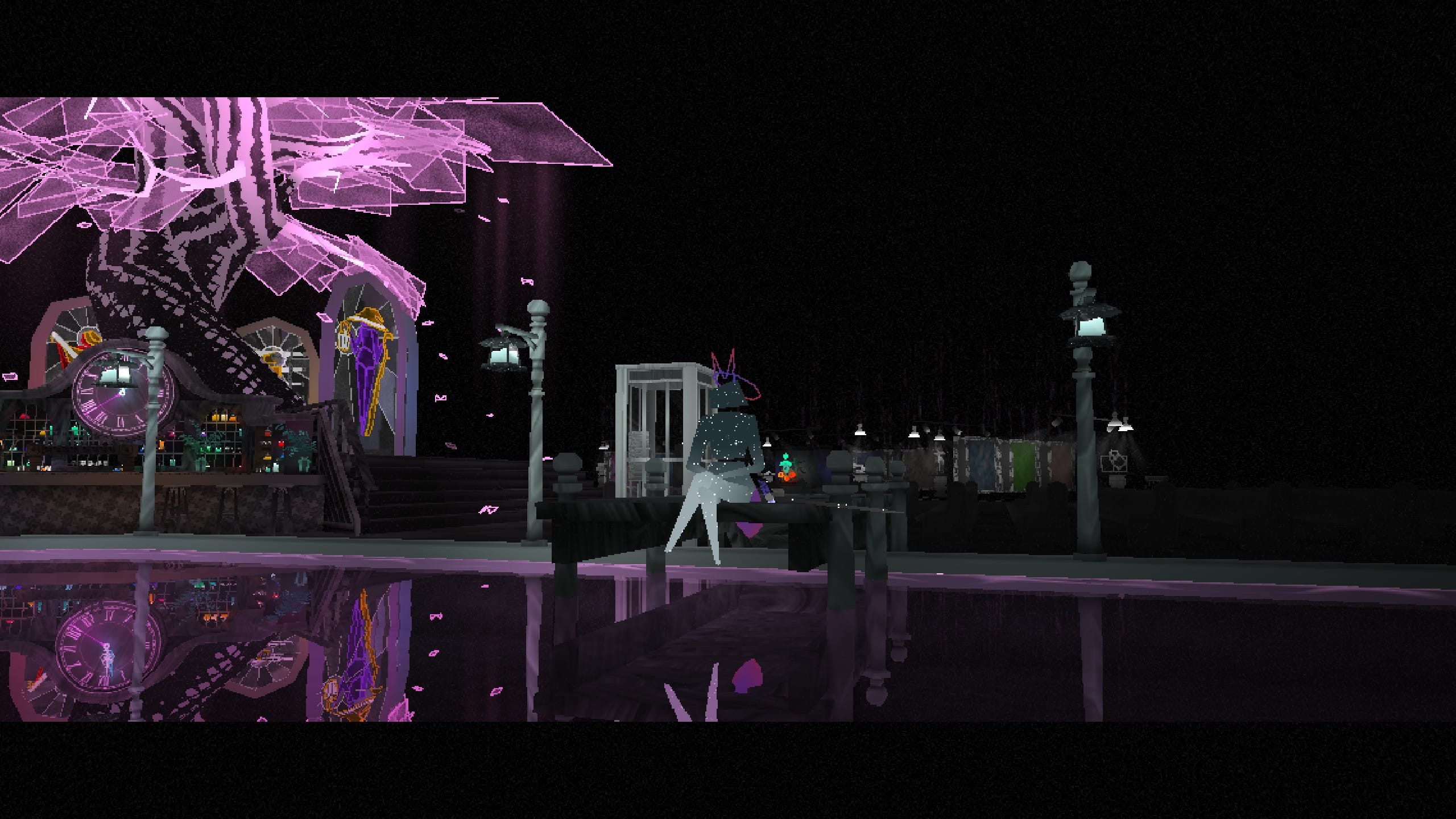Firefly is, of course, the house that Stronghold built. The original game was the very first project for the UK-based studio, and immediately made their name. Stronghold: Crusader was ultimately mainly a re-skin, transplanting the castle-building and siege action from medieval England to the Holy Land during the Crusades. It has proved to be the jewel in Firefly’s crown, and their attempts to equal its impact have never been successful.
By the time Stronghold Warlords arrived in 2021, the formula felt very tired indeed. A move to the conflicts of Asia did not mask the creeping sense of sameness. That year, Firefly were acquired by the fast-growing American publisher Devolver Digital. Under this new regime, Firefly have resuscitated the games that got them started, first with the original Stronghold in 2023 and now with Stronghold: Crusader.
The most obvious enhancement here is visual. This remaster supports high, modern resolutions which demonstrate wonderfully the work that Firefly’s brilliant artists did nearly 25 years ago. The Stronghold games have always been packed with lovely details and they look superb in this context. Tiny woodsmen, farmers, brewers, and weapon-makers carry their wares through gatehouses and into castles. Production and town buildings like breweries and bakeries display intricate cutaways when the cursor passes over them, showing the activity inside. When battles begin, crossbowmen frantically wind up their weapons and trebuchets hurl projectiles into the air. This is one of the great showcases for the early 2000s golden era for this kind of animation work.

Under the meticulous aesthetics, the developers have faithfully recreated the original gameplay. It is here that opinion will likely be sharply divided. Those who played Stronghold: Crusader back in 2002 will thrill at the chance to revisit the old campaigns, skirmishes, and “crusader trail”. Newcomers, though, may find the experience to be confusing, frustratingly arbitrary, and crushingly difficult.
What still feels distinctive about the Stronghold formula – for better or worse – is that it straddles city-building and real-time strategy elements. Like the initial release, this remaster is both a fairly complex economic game, and a very demanding depiction of historical combat. Success means balancing these two elements with great care. Failing to replace a damaged stone-mining infrastructure will make it difficult to repair broken walls, meaning that the next enemy assault will likely cause the player’s castle to fall.
In principle, this is an interesting strategic challenge. In practice, the two aspects of the game mesh awkwardly, especially from today’s perspective. The combat mechanics in particular are poorly tutorialised, and the interface is confusing. Finding the correct building to construct in the short time before it is needed is a constant saga. Firefly have opted not to make any changes in these areas, when a modernisation of the UI could have paid dividends.

Other aspects of Stronghold: Crusader are showing their age. The mission design is very basic, even for an RTS of this era. Terrain plays little role in missions, and enemy forces typically arrive from one of several signposts at the edges of the map. There is very little sense of military or economic logic to any of the missions, let alone much connection with the history of the crusades. The addition of economic campaigns with minimal combat (a strong feature in the original Stronghold) in a future update is sure to be an improvement, however.
As a remaster, it is difficult to criticise Stronghold: Crusader and to be clear, fans of the 2002 original – with all its idiosyncrasies – will find this by far the best way to play the game. Newcomers, though, are likely to be frustrated by the confusing mechanics, dated UI, and ruthless difficulty. With these two remasters out of the way, perhaps it is time for Firefly to try once again to modernise and extend this series, which is historic in more ways than one.





